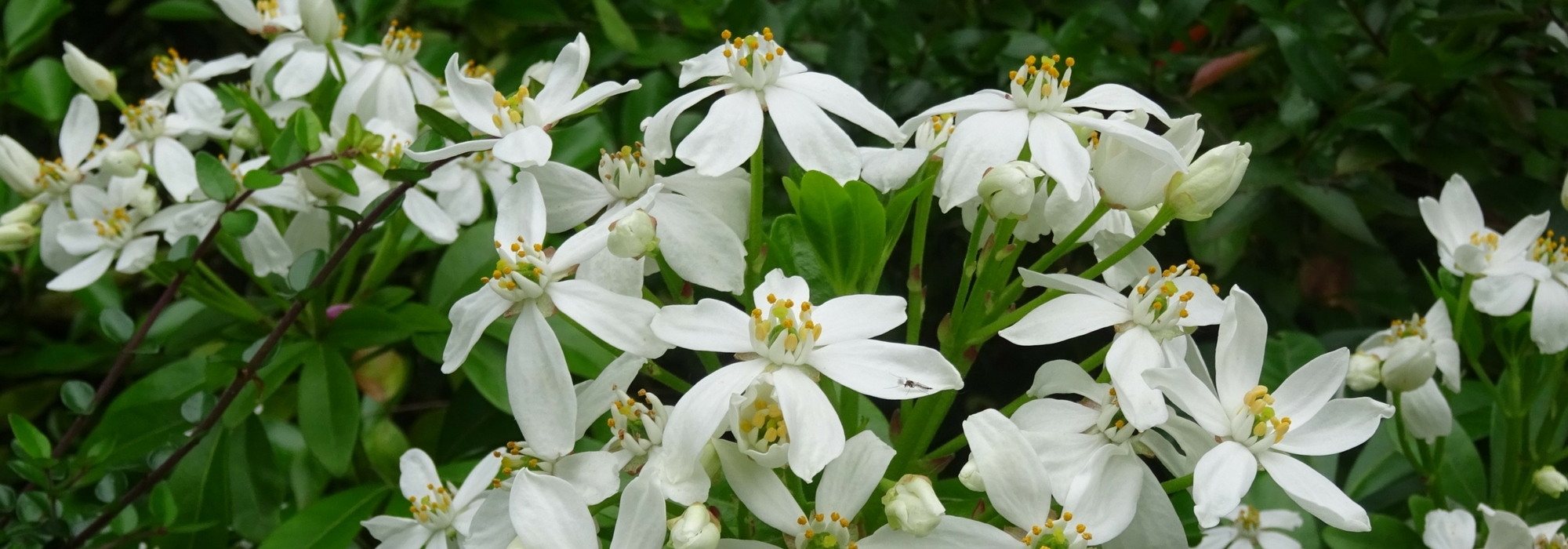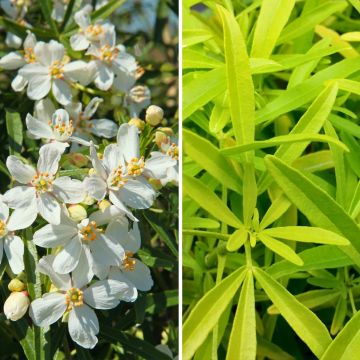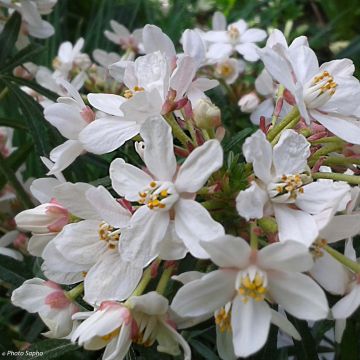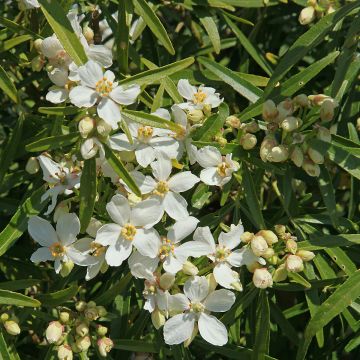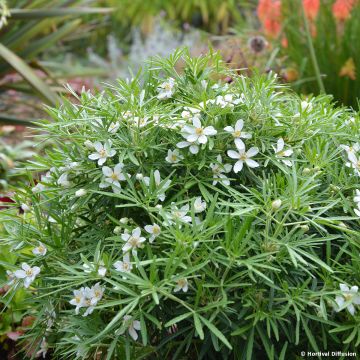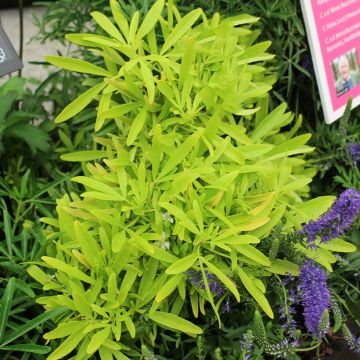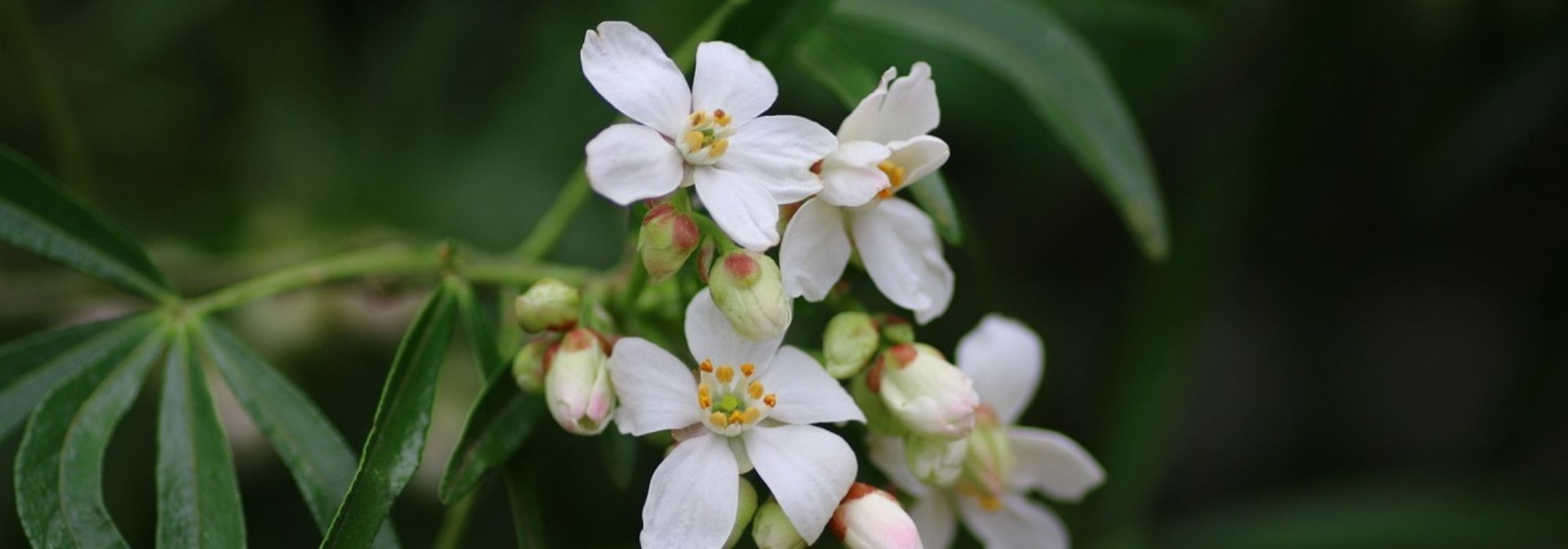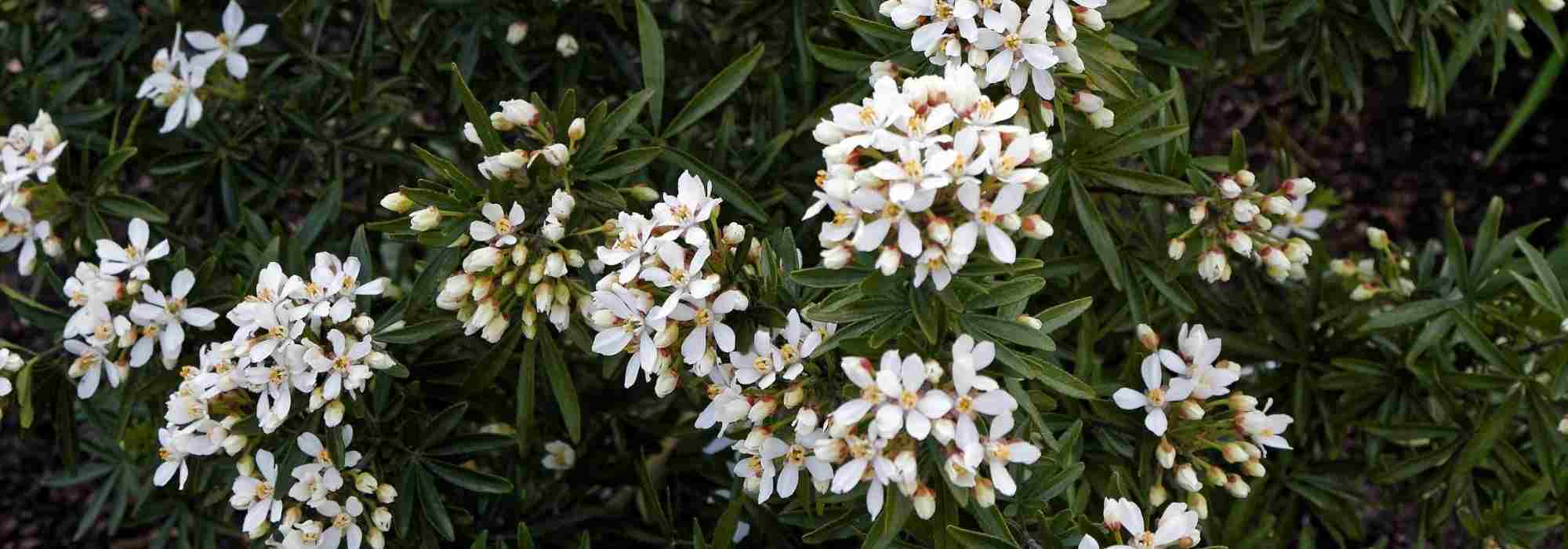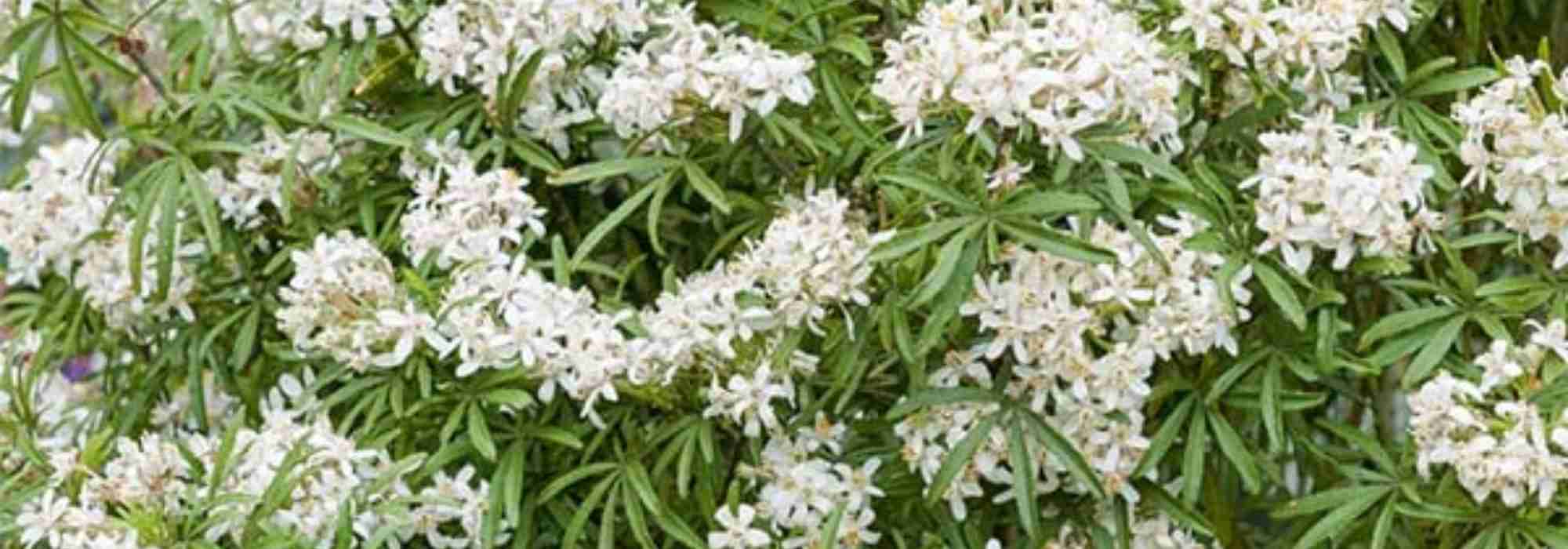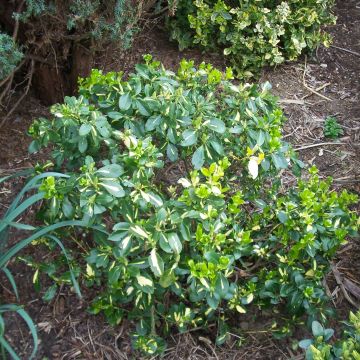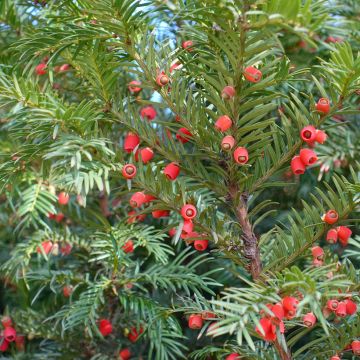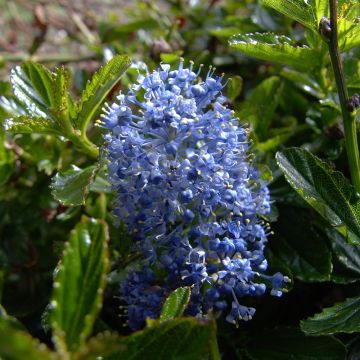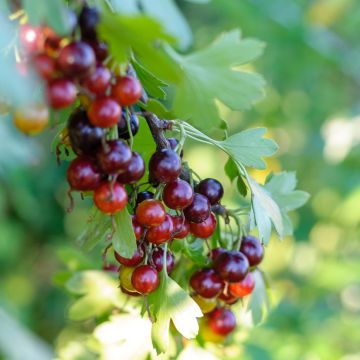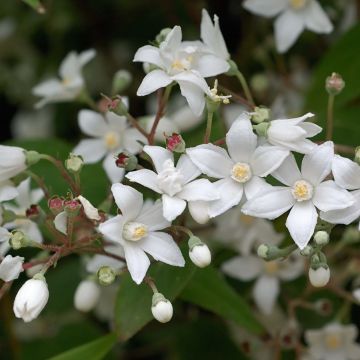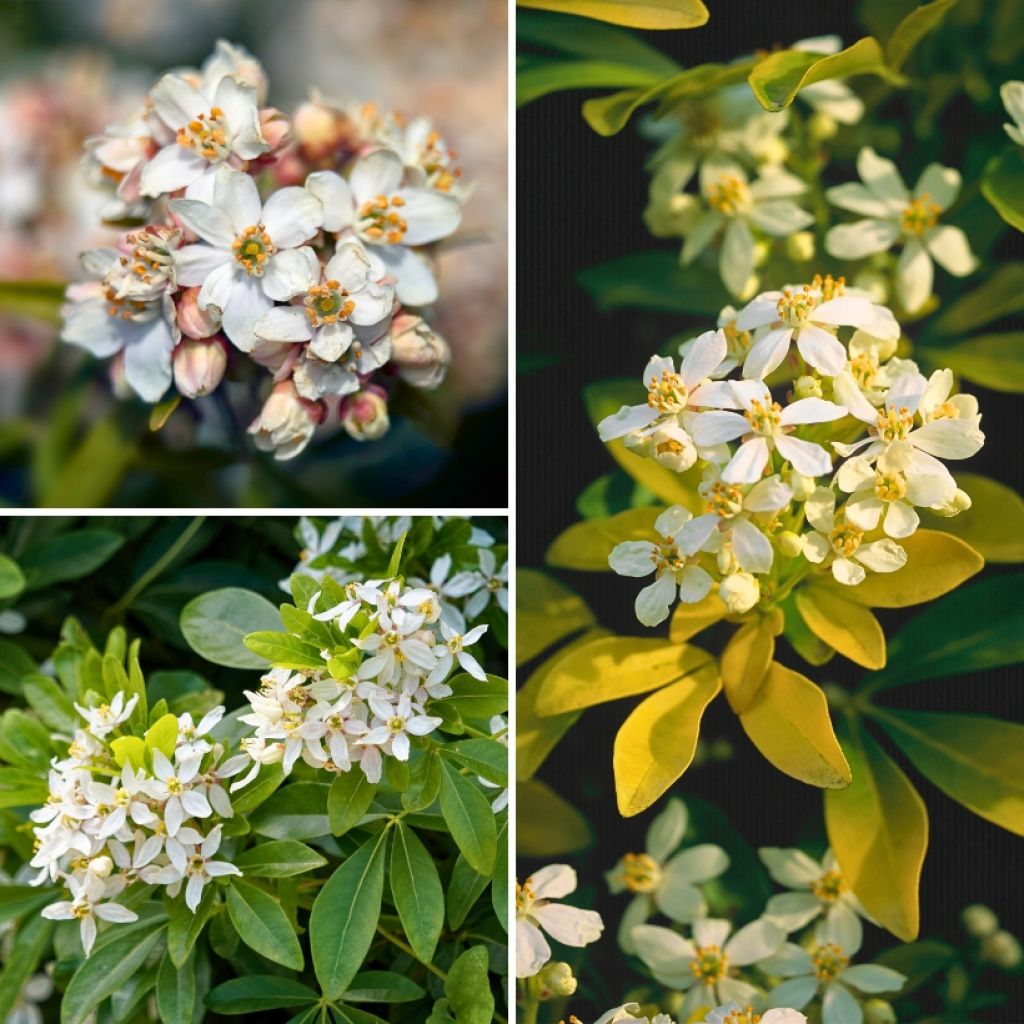

Collection of Mexican Orange Blossoms
Collection of Mexican Orange Blossoms
Choisya ternata sp., Sundance, Aztec Pearl
Mexican Orange, Mexican Orange Blossom, Mexican Orange Flower
Special offer!
Receive a €20 voucher for any order over €90 (excluding delivery costs, credit notes, and plastic-free options)!
1- Add your favorite plants to your cart.
2- Once you have reached €90, confirm your order (you can even choose the delivery date!).
3- As soon as your order is shipped, you will receive an email containing your voucher code, valid for 3 months (90 days).
Your voucher is unique and can only be used once, for any order with a minimum value of €20, excluding delivery costs.
Can be combined with other current offers, non-divisible and non-refundable.
Home or relay delivery (depending on size and destination)
Schedule delivery date,
and select date in basket
This plant carries a 24 months recovery warranty
More information
We guarantee the quality of our plants for a full growing cycle, and will replace at our expense any plant that fails to recover under normal climatic and planting conditions.
Would this plant suit my garden?
Set up your Plantfit profile →
Collection items (3 plants)
Description
This collection of Mexican Orange Blossoms will create the evergreen structure of an informal hedge or a large shrub bed in not too cold climates. These elegant shrubs, attractive even in winter, offer a beautiful white flowering with the scent of orange blossom between March and May, and often a second, smaller flowering in late summer. Their foliage is pleasantly aromatic when crushed in a color ranging from glossy dark green to golden green depending on the plant. These relatively hardy Mexican orange blossoms are drought-resistant when planted in the ground. They are also perfect against the wall of a house.
The collection consists of:
1 Choisya ternata: a botanical species native to Mexico, quickly forming a large bush, reaching 2 metres in all directions. Its leaves are divided into 3 wide, very bright, shiny green leaflets. At the end of the branches, compact clusters of small flowers with 5 white petals appear, loved by pollinating insects.
1 Choisya ternata Sundance: a brighter variety than the previous species, with foliage that is yellow in spring and then tender green. Its flowering is the same.
1 Choisya 'Aztec Pearl': a hybrid with magnificent finely cut, light green foliage, with white flowers tinged with pink in bud and delicately scented. The shrub reaches the same dimensions as the previous two. Its growth is slightly slower.
The Mexican orange tree is hardy down to -12/-15°C. This shrub likes loose, well-worked, deep, rich soil that is not too wet in winter and summer. It tolerates the presence of limestone. Keep a minimum spacing of 1 metre between two plants. To create a maintenanace-free, 2-metre tall evergreen hedge, plant these three Mexican orange trees alternating with Lisarose Laurustinus, Compact Elaeagnus, Photinia Devil's Dream, and Apple Blossom Escallonia. You will have a permanent green screen that flowers almost all year round.
Plant habit
Flowering
Foliage
Botanical data
Choisya
ternata sp., Sundance, Aztec Pearl
Rutaceae
Mexican Orange, Mexican Orange Blossom, Mexican Orange Flower
Cultivar or hybrid
Other Choisya - Mexican Orange Blossom
View all →Planting and care
The Mexican Orange Blossom is best planted in spring in the north and early autumn in drier and warmer climates. It likes light, loose, well-drained soils. It tolerates the presence of limestone in the soil, but not in excess. Once established, after 2 or 3 years of cultivation, it is capable of surviving without watering in summer. It is resistant to -12°C but quite sensitive during its early years, especially in heavy and wet soil: lighten your garden soil if necessary with river sand, gravel or volcanic rock. Choose a warm location, in full sun, in cold regions, but partial shade in very sunny and dry regions. If it does grow in the shade, under trees, its habit will be looser and its flowering less abundant. Shelter from cold winds. Water regularly in summer during the first years if necessary, to help the bush establish itself.
Attention: Choisya is sensitive to attacks from Phytophthora, a fungus that attacks the base of the plant when the soil is both warm and constantly moist therefore watering in summer should be spaced out to allow the soil to dry between two abundant water supplies in hot regions. The Mexican Orange Blossom is an easy-to-cultivate plant that tolerates competition from the roots of large trees. For an informal hedge, use one plant every 60 to 80 cm.
Planting period
Intended location
Care
Planting & care advice
This item has not been reviewed yet - be the first to leave a review about it.
Similar products
Haven't found what you were looking for?
Hardiness is the lowest winter temperature a plant can endure without suffering serious damage or even dying. However, hardiness is affected by location (a sheltered area, such as a patio), protection (winter cover) and soil type (hardiness is improved by well-drained soil).

Photo Sharing Terms & Conditions
In order to encourage gardeners to interact and share their experiences, Promesse de fleurs offers various media enabling content to be uploaded onto its Site - in particular via the ‘Photo sharing’ module.
The User agrees to refrain from:
- Posting any content that is illegal, prejudicial, insulting, racist, inciteful to hatred, revisionist, contrary to public decency, that infringes on privacy or on the privacy rights of third parties, in particular the publicity rights of persons and goods, intellectual property rights, or the right to privacy.
- Submitting content on behalf of a third party;
- Impersonate the identity of a third party and/or publish any personal information about a third party;
In general, the User undertakes to refrain from any unethical behaviour.
All Content (in particular text, comments, files, images, photos, videos, creative works, etc.), which may be subject to property or intellectual property rights, image or other private rights, shall remain the property of the User, subject to the limited rights granted by the terms of the licence granted by Promesse de fleurs as stated below. Users are at liberty to publish or not to publish such Content on the Site, notably via the ‘Photo Sharing’ facility, and accept that this Content shall be made public and freely accessible, notably on the Internet.
Users further acknowledge, undertake to have ,and guarantee that they hold all necessary rights and permissions to publish such material on the Site, in particular with regard to the legislation in force pertaining to any privacy, property, intellectual property, image, or contractual rights, or rights of any other nature. By publishing such Content on the Site, Users acknowledge accepting full liability as publishers of the Content within the meaning of the law, and grant Promesse de fleurs, free of charge, an inclusive, worldwide licence for the said Content for the entire duration of its publication, including all reproduction, representation, up/downloading, displaying, performing, transmission, and storage rights.
Users also grant permission for their name to be linked to the Content and accept that this link may not always be made available.
By engaging in posting material, Users consent to their Content becoming automatically accessible on the Internet, in particular on other sites and/or blogs and/or web pages of the Promesse de fleurs site, including in particular social pages and the Promesse de fleurs catalogue.
Users may secure the removal of entrusted content free of charge by issuing a simple request via our contact form.
The flowering period indicated on our website applies to countries and regions located in USDA zone 8 (France, the United Kingdom, Ireland, the Netherlands, etc.)
It will vary according to where you live:
- In zones 9 to 10 (Italy, Spain, Greece, etc.), flowering will occur about 2 to 4 weeks earlier.
- In zones 6 to 7 (Germany, Poland, Slovenia, and lower mountainous regions), flowering will be delayed by 2 to 3 weeks.
- In zone 5 (Central Europe, Scandinavia), blooming will be delayed by 3 to 5 weeks.
In temperate climates, pruning of spring-flowering shrubs (forsythia, spireas, etc.) should be done just after flowering.
Pruning of summer-flowering shrubs (Indian Lilac, Perovskia, etc.) can be done in winter or spring.
In cold regions as well as with frost-sensitive plants, avoid pruning too early when severe frosts may still occur.
The planting period indicated on our website applies to countries and regions located in USDA zone 8 (France, United Kingdom, Ireland, Netherlands).
It will vary according to where you live:
- In Mediterranean zones (Marseille, Madrid, Milan, etc.), autumn and winter are the best planting periods.
- In continental zones (Strasbourg, Munich, Vienna, etc.), delay planting by 2 to 3 weeks in spring and bring it forward by 2 to 4 weeks in autumn.
- In mountainous regions (the Alps, Pyrenees, Carpathians, etc.), it is best to plant in late spring (May-June) or late summer (August-September).
The harvesting period indicated on our website applies to countries and regions in USDA zone 8 (France, England, Ireland, the Netherlands).
In colder areas (Scandinavia, Poland, Austria...) fruit and vegetable harvests are likely to be delayed by 3-4 weeks.
In warmer areas (Italy, Spain, Greece, etc.), harvesting will probably take place earlier, depending on weather conditions.
The sowing periods indicated on our website apply to countries and regions within USDA Zone 8 (France, UK, Ireland, Netherlands).
In colder areas (Scandinavia, Poland, Austria...), delay any outdoor sowing by 3-4 weeks, or sow under glass.
In warmer climes (Italy, Spain, Greece, etc.), bring outdoor sowing forward by a few weeks.

































